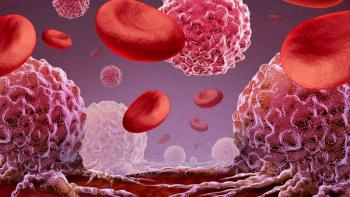
Is Resistance Training Safe for Patients With Breast Cancer?
Key Takeaways
- Resistance training improved muscle mass and fluid balance in breast cancer patients without worsening lymphedema, supporting its inclusion in treatment and survivorship care.
- The study involved 115 women, with a median age of 54, who completed a three-month resistance training program, showing increased bilateral arm lean mass and reduced edema index.
Structured resistance training is safe for breast cancer patients, improving arm muscle and reducing lymphedema during and after treatment.
Intense resistance training does not worsen lymphedema and may improve fluid balance and muscle mass in the arms, which supports including structured resistance exercise in breast cancer treatment and survivorship care, according to study findings published in Jama Network Open.
“To our knowledge, this is one of the largest studies assessing a strictly prescribed, dose-escalated, and observed resistance training regimen in a large population of women with breast cancer,” wrote study authors.
Bilateral arm lean mass increased after resistance training, rising from 5.45 pounds at the start to 5.64 pounds after the program, showing patients gained muscle in both arms. The edema index, which measures fluid buildup in the arm relative to total body water, decreased from ~0.385 to 0.383, indicating reduced lymphedema for all patients.
A total of 115 women completed the exercise program, with a median age of 54 years. Most participants (96 women, 83%) had a sentinel lymph node biopsy, while 14 women (12%) had an axillary lymph node dissection. At the start, 15 women (13%) had clinical lymphedema — 8 women (8%) in the sentinel lymph node biopsy group and 7 women (37%) in the axillary lymph node dissection group. None of the participants experienced worsening of lymphedema during or after the exercise program.
“These findings highlight the safety of strength and resistance training in a large group of patients with breast cancer during and after treatment and illustrate its potential as a reduction strategy for lymphedema,” wrote study authors.
How Strength Training Programs Support Women During and After Breast Cancer Treatment
Training was delivered at the Allegheny Health Network Exercise Oncology Center as part of three prospective study cohorts: EXERT-BC, EXERT-BCN and EXERT-C. Written informed consent was obtained from all participants, and the study was approved by the Allegheny Health Network Review Board.
All participants completed a three-month program with three resistance training sessions per week. The regimen included multijoint compound movements using a dose-escalated, linear progression approach with enough training volume to promote muscle growth. The structure of the program has been previously described, and all participants followed a similar course. Study objectives included evaluating safety, adherence, and the effects on body composition, strength, mobility, and quality of life during and after breast cancer treatment.
Body composition was measured for each participant within one week before starting the program and again within one week after completion. Ultrasound was also used to confirm findings. Fat mass, fat-free mass, and body fat percentage were assessed.
Adherence was monitored with electronic attendance logs and direct trainer supervision. Participants were required to attend at least 75% of scheduled sessions to be considered adherent.
Women aged 20 to 89 years with biopsy-confirmed ductal carcinoma in situ or invasive breast cancer were eligible. Eligibility required the ability to get up and down from the floor, squat body weight, and join group exercise. Radiation therapy, antiestrogen therapy, and targeted systemic therapy were permitted in all studies.
“By promoting muscle hypertrophy, strength and functional capacity, strength training may mitigate the functional impairments and muscle loss associated with breast cancer treatment, thereby improving overall quality of life and physical function,” study authors wrote, “However, reaching an appropriate dose of exercise to produce optimal neurologic and muscular adaption to promote considerable hypertrophy requires a program to exceed an appropriate threshold and quantity that are often not met.”
Reference
- “Resistance Training and Lymphedema in Breast Cancer Survivors,” by Dr. Parisa Shamsesfandabadi, et al. Jama Network Open.
For more news on cancer updates, research and education,





